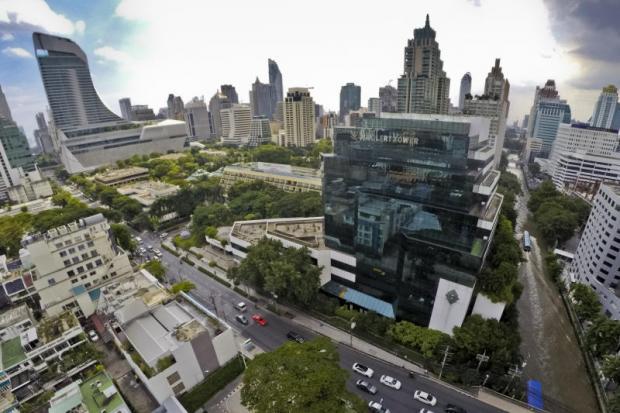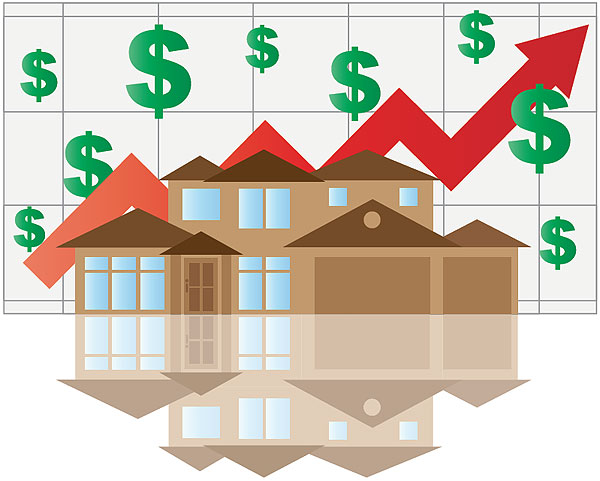
HOT PROPERTY: The Swissotel Nai Lert Park Hotel was sold to Bangkok Dusit Medical Services for 10.8 billion baht. (Photo by Krit Promsaka na Sakolnakorn)
In the property industry, it is the land market that leads the price trends for all sectors, from residential condominium prices to office and retail space rents. Given that the land price is often one of the largest components in a development project, it is the base that dictates property prices.
Many buyers wonder, for example, why condominium prices in Bangkok's central business district are constantly rising. Aside from the more premium design, specifications and services that new prime CBD developments offer, it is the developer's land acquisition cost that affects the price at the end of the day.
Every now and again we will read __news of record-breaking land prices, particularly for prime sites in the heart of the CBD. Last year, a three-rai plot on Chidlom Road was sold to the SET-listed developer SC Asset Plc for 1.9 million baht per square wah (four square metres), a value the market thought was overpriced at that time. The site will now be developed into a super-luxury condominium.
Just a few weeks ago, the largest land transaction in the capital's history was announced. The legendary Swissotel Nai Lert Park Hotel, which sits on a prime 15-rai plot on Wireless Road, was sold to Bangkok Dusit Medical Services, the country's largest hospital operator, for 1.8 million baht per square wah, in a deal worth a total of 10.8 billion baht. The buyer plans to develop a high-end wellness centre.
Prices of prime land in the CBD have shown no signs of slowing down. While there are only a handful of prime transactions in a given year, scarcity is the key factor that keeps pushing prices up, particularly for prime plots eyed by top developers.
However, not all plots are equally attractive and can command the prices we read about in the headlines. There are a number of factors that determine what a plot is worth. It is important to understand what they are and how they come into play.
Location is, of course, the key price determinant. But within the same location, one plot can vary significantly in price compared with another. The first factor that affects price is zoning as this dictates the land use -- whether it can be used for commercial purposes or residential only.
Plots that allow commercial use will typically command the highest value as they can be built to a higher plot ratio. Another factor that directly affects land value is the road width where the land is located. This has a direct impact on the gross floor area of a building that can be constructed on the plot.
For example, plots on roads between six and 10 metres wide can only accommodate low-rises under 23 metres and with a gross floor area of under 10,000 square metres. On a plot on a road that is 10 to 18 metres wide, a developer can erect a building with between 10,000 and 30,000 sq m of gross floor area, and plots on roads that are 18 metres wide or more can accommodate buildings in excess of 30,000 sq m.
Several other factors affect value. These include proximity to mass transit, expressways and main roads, the shape of the plot, views from the site and proximity to amenities such as retail centres, schools and hospitals.
Another key consideration, particularly for Bangkok, is access to and from the site. Given the city's traffic conditions, having multiple entries and exits is extremely beneficial and certainly has added value, particularly for larger plots planned for large mixed-use developments.
With all these considerations coming into play, even plots on the same road can vary substantially in value. A good example is Sukhumvit Road, where only certain sub-sois are wide enough to build high-rise developments. The Sukhumvit sois with the highest potential for new high-rise residential developments today include sois 21, 39, 55 and 63 on the north side and 22, 26, 40 and 42 on the south side.
Given the variations in values of plots, rates of capital appreciation also vary. If we look at the CBD areas, the compounded annual growth rate for prime plots in the Phloenchit/Lumpini, Sukhumvit, Silom and Sathon areas was 14% on average between 2002 and 2016. The highest growth rate was on Sukhumvit at 16%.
However, this price growth does not reflect the market average for land plots across the CBD as it only represents prime main-road plots in the heart of Bangkok. As an overall estimate, land prices in the CBD are rising on average by 3-5% annually. Suburban locations where there is less development interest and activity will experience a lower growth rate.
An additional factor that will now affect land pricing and land stock for sale is the introduction of the land and buildings tax that will come into effect next year. The new tax is likely to create a wave of change in the land market. The current municipal and household tax rates are relatively low. The land and buildings tax will represent the first imposition of a significant holding cost on land and property.
One of the short-term impacts we may see is an increase in plots available for sale, which will create a more active land market with more transactions. We will have to wait and see how this affects land values and whether it will affect certain areas only or values across the market.
Aliwassa Pathnadabutr is managing director of CBRE Thailand. She can be reached at bangkok@cbre.co.th; Facebook: CBRE.Thailand; Twitter: @CBREThailand; LinkedIn: CBRE Thailand; website: www.cbre.co.th.

No comments:
Post a Comment